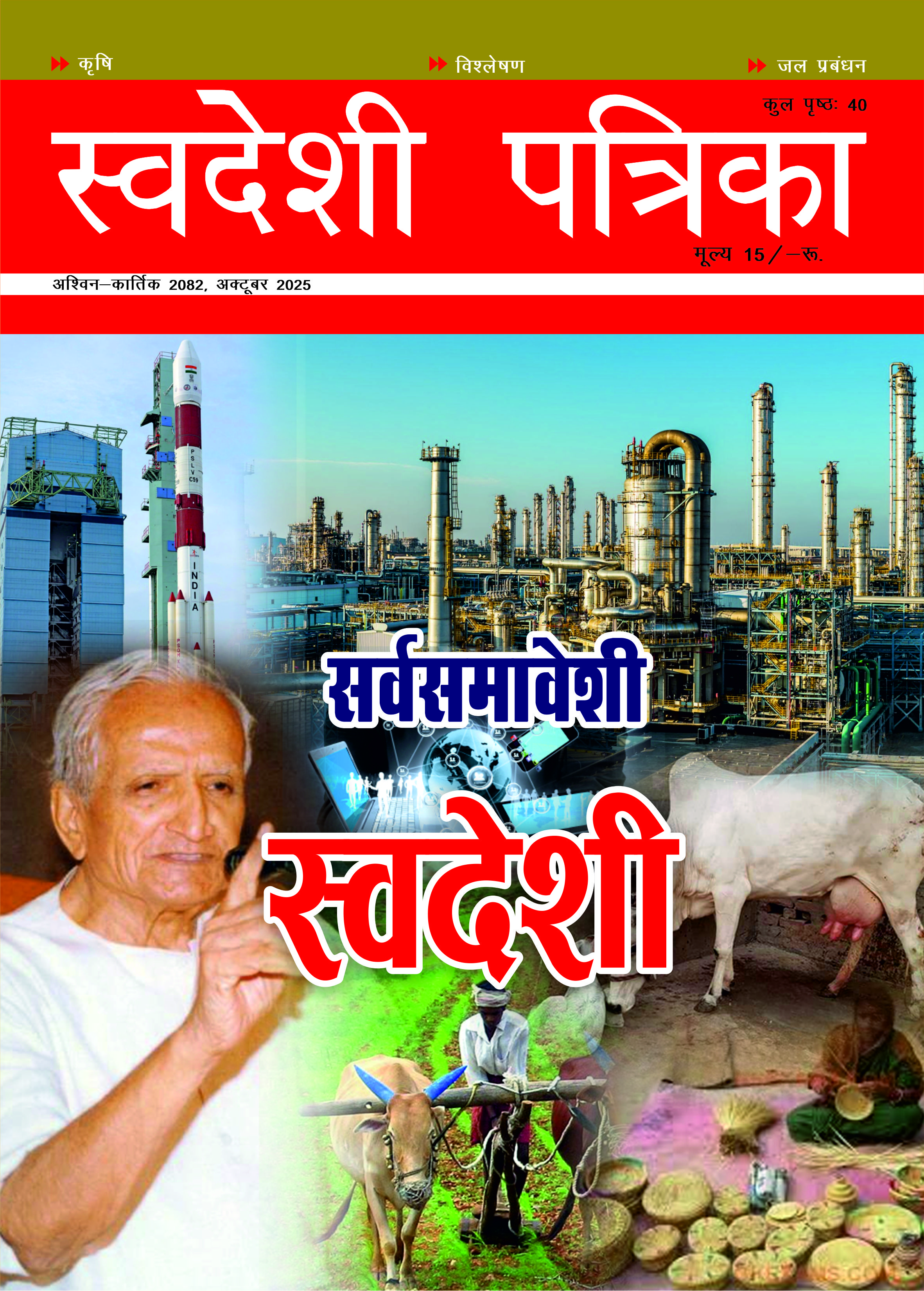
The Slowdown: Challenges and Remedies
India’s economic growth narrative has encountered a slowdown, but the country’s long-term potential remains intact. With a judicious mix of fiscal stimulus, monetary policy adjustments, and structural reforms, the economy can navigate these challenges and return to a robust growth trajectory. —KK Srivastava
The first three quarters of 2024 have revealed a significant dip in economic performance, sparking concerns despite government assurances about the nation’s long-term growth prospects. India’s GDP growth is expected to reach 6.5% this fiscal year, potentially retaining its status as the fastest-growing large economy. However, this rate of growth is inadequate to address pressing challenges such as employment generation, income inequality, and sustainable development.
In comparison, economies like China, South Korea, and Japan consistently achieved growth rates exceeding 8% during their high-growth phases. Such elevated rates propelled robust job creation, narrowed income disparities, and significantly increased per capita income. India’s current growth trajectory lacks the vigor needed to produce similar outcomes. The pressing question remains: Is this slowdown temporary and cyclical, or does it signal a return to pre-pandemic trends following an “abnormal” post-pandemic recovery driven by a low base? Either way, the current deceleration is more severe than anticipated and requires urgent attention.
Key Drivers of the Slowdown
The secondary sector, encompassing manufacturing, construction, electricity, and utilities, has been a significant drag on the economy. Despite healthy corporate and banking balance sheets, private capital expenditure has stagnated. The lack of “animal spirits,” or the willingness to invest in anticipation of robust future demand, has created a vicious cycle. This hesitation among businesses to invest has dampened consumer demand, further stalling economic growth.
Prominent policymakers, including the Finance Minister and Chief Economic Advisor, have recommended cutting interest rates to stimulate borrowing and spending. However, the Reserve Bank of India (RBI) has remained cautious, citing inflationary concerns. Stricter regulations on unsecured non-bank lending have further restricted consumer spending. While reducing interest rates might offer a temporary boost, prioritizing growth at the cost of long-term stability poses risks. Additionally, the government’s commitment to fiscal consolidation limits the scope for increased public spending as a growth stimulus.
Long-Term Implications of Slow Growth
India has demonstrated resilience in maintaining macroeconomic stability compared to other major economies during the post-pandemic recovery phase. However, sustaining a minimum annual growth rate of 7% is essential for providing a decent quality of life for its 1.5 billion citizens. This urgency becomes even more pronounced as India’s demographic dividend begins to diminish, driven by underutilized youth potential and their declining share in the overall population.
Global economic conditions further exacerbate India’s challenges. China, a major player in global trade, struggles with overcapacity, while the potential return of protectionist trade policies under Trump 2.0 could adversely affect India’s exports. On the domestic front, manufacturing growth has dropped sharply from 7% in the previous quarter to 2.2%, reflecting the broader economic malaise.
Urban consumption has also weakened, particularly among lower-income groups. Stagnant wages and inflation nearing 6% have eroded purchasing power. Food inflation, which exceeds 10%, has added to household financial strain, reducing discretionary spending and consumption levels. Private consumption, a significant driver of GDP, rose by just 6% in the July-September quarter, down from 7.4% in the preceding quarter.
Urban Indians, whose spending substantially contributes to GDP growth, face stagnant or declining inflation-adjusted wages. The situation has been further aggravated by capital outflows since October, signaling waning investor confidence. Moreover, the U.S. Federal Reserve’s reluctance to lower interest rates as aggressively as anticipated makes Indian markets less attractive to foreign investors.
Bright Spots Amid the Challenges
Despite the challenges, agriculture remains a bright spot, with the sector recording a 3.5% growth in the July-September quarter, aided by favorable monsoon conditions. Rural demand, bolstered by this agricultural growth, offers a counterbalance to the urban slowdown. If adequately supported by targeted government measures, this demand could help stabilize the economy. Additionally, public spending continues at a healthy pace, providing a critical cushion against economic headwinds.
Monetary Stimulus: A Double-Edged Sword
The debate over monetary stimulus remains at the forefront. The RBI has resisted calls to reduce benchmark interest rates from 6.5%, emphasizing inflationary concerns. Nonetheless, some economists argue that the current economic climate necessitates rate cuts. High borrowing costs discourage capacity building and fresh investments, exacerbating the slowdown in manufacturing and urban demand.
Interest rate reductions, while not a panacea, could provide a psychological and financial boost. Lower borrowing costs might ease the burden of loan repayments, freeing disposable income and encouraging consumption. Businesses, too, could benefit from reduced financing costs, potentially rekindling investment activity. However, the impact of monetary easing typically operates with a lag, underscoring the need for complementary structural reforms.
Structural Reforms: The Need of the Hour
Monetary easing alone cannot address the root causes of the slowdown. Structural reforms are essential to tackle manufacturing overcapacity, enhance export competitiveness, and curb the dumping of cheap imports that undermine domestic industries. The government must also prioritize technological advancements and capitalize on global shifts, such as the “China Plus One” strategy, which aims to diversify supply chains beyond China. Unfortunately, India has not fully leveraged this opportunity.
While supply-side issues are significant, the primary driver of the slowdown lies on the demand side. Aggregate demand, including both consumption and investment, remains weak. Corporates, despite healthy profits, have focused on deleveraging rather than channeling gains toward wage increases or capacity expansion. This focus has further dampened aggregate demand, perpetuating the investment cycle’s stagnation.
Coordinated Policy Action: The Way Forward
India’s economy, though fundamentally resilient, cannot afford to overlook the warning signs of the current slowdown. Even in the absence of an immediate crisis, this period should serve as a wake-up call for policymakers. Coordinated efforts are required to reinvigorate the economy and ensure sustained growth.
First, fiscal policy must be leveraged to provide targeted support to sectors most affected by the slowdown. While fiscal consolidation is important, a measured increase in public spending can stimulate demand without jeopardizing macroeconomic stability.
Second, monetary policy should strike a balance between inflation control and growth stimulation. If inflationary pressures ease, the RBI could consider a calibrated reduction in interest rates to support borrowing and investment.
Third, structural reforms must be accelerated to address long-standing challenges. Policies aimed at improving labor productivity, enhancing infrastructure, and simplifying regulatory frameworks could create a more conducive environment for investment.
Finally, export promotion should be a key focus area. Strengthening trade partnerships, diversifying export baskets, and enhancing the competitiveness of Indian products in global markets can provide a much-needed boost to the economy.
Growth Beyond Numbers
Economic growth is more than just a statistical measure; it is a means to improve the well-being of the nation’s citizens. Addressing the current slowdown requires a multi-pronged approach that goes beyond short-term fixes. It demands a vision for inclusive and sustainable development that prioritizes the needs of the people.
By addressing both supply-side and demand-side challenges, India can lay the foundation for a resilient and dynamic economy. The slowdown, while concerning, also presents an opportunity to rethink and recalibrate the drivers of growth. Through innovation, coordinated policy action, and a focus on structural reforms, India can emerge stronger and better positioned to achieve its long-term goals.
Conclusion
India’s economic journey has always been marked by resilience and adaptability. However, the current slowdown is a reminder that complacency is not an option. The challenges are formidable, but so are the opportunities. By harnessing its inherent strengths and addressing its vulnerabilities, India can not only overcome the present slowdown but also set the stage for sustained high growth in the future. Growth is not just about achieving impressive GDP numbers; it is about ensuring the prosperity and well-being of the nation. The time to act is now.


